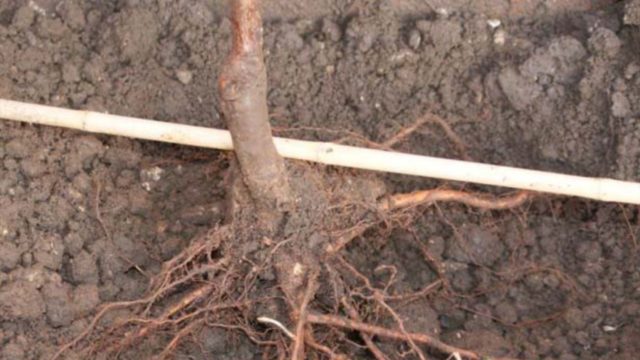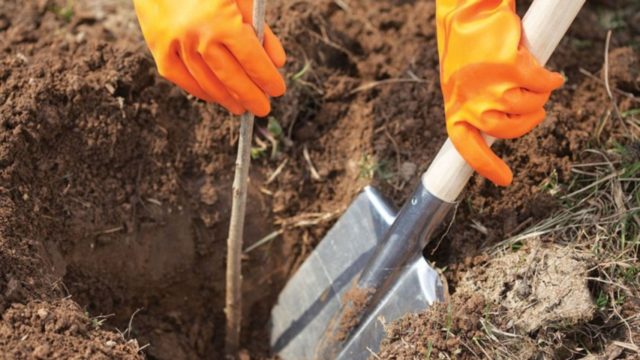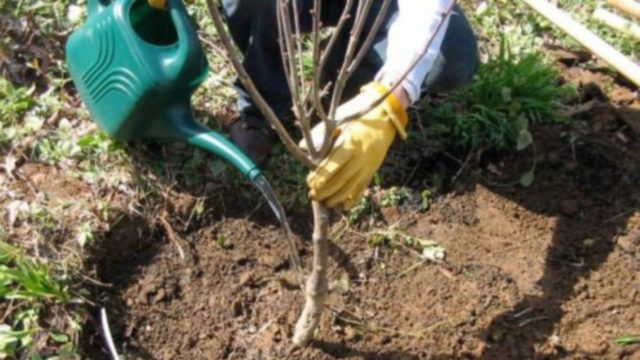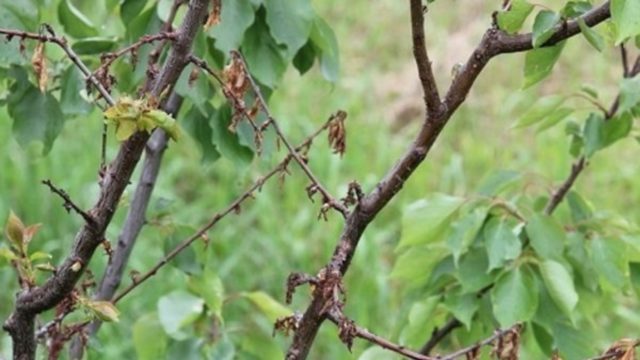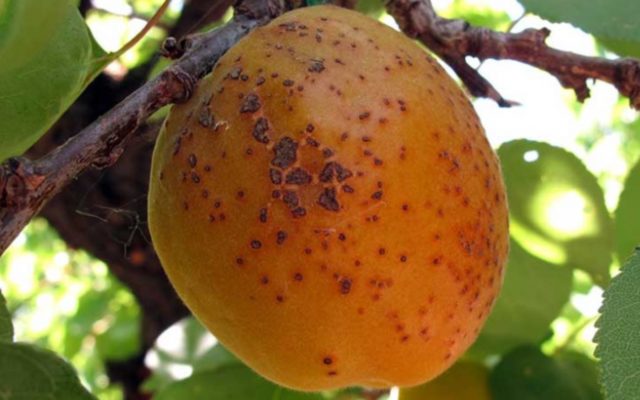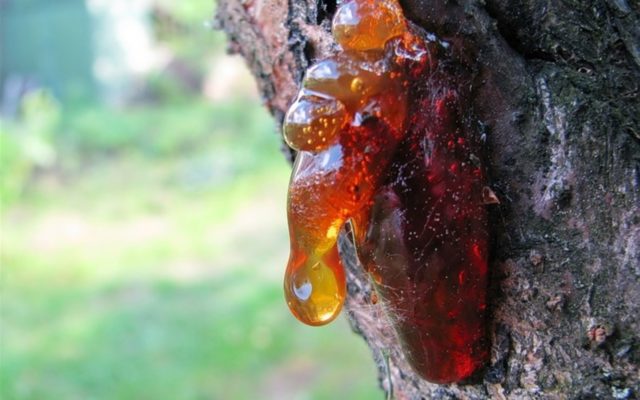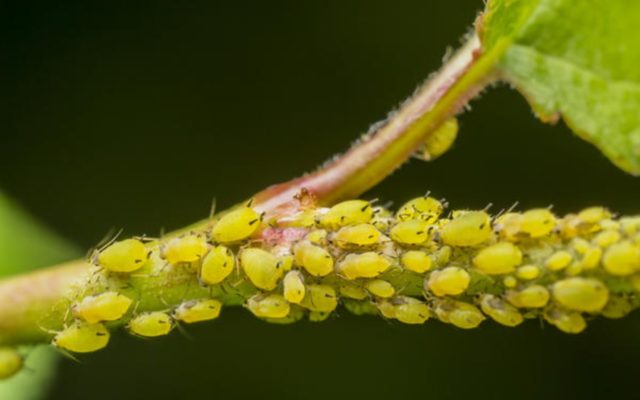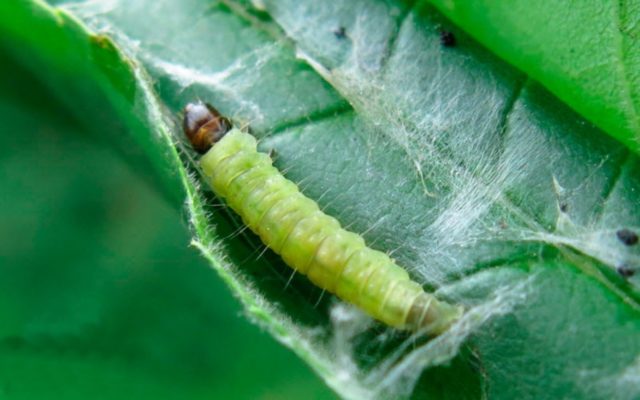Content
Apricot Peach is a hybrid form of culture, characterized by increased resistance to adverse climatic conditions, large fruit size and excellent taste. In terms of its characteristics, this species is in many ways similar to the Breda variety, which has gained wide popularity in European countries. The hybrid completely dispelled the opinion that apricots can only be grown in the southern regions. With its appearance, it became possible in the central regions.
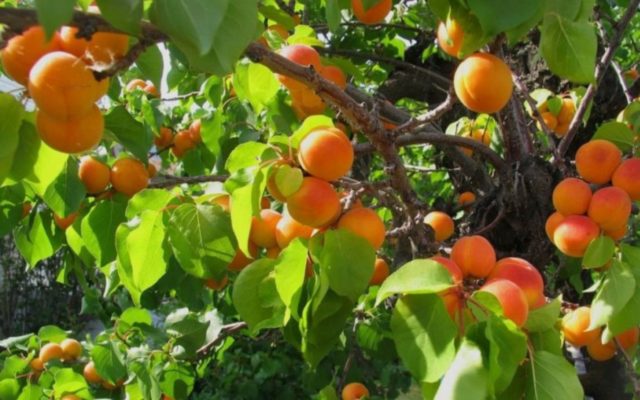
Life expectancy of apricot Peach - 10 years
Breeding history
This species was obtained at the beginning of this century by crossing a peach and an apricot. He managed to absorb the best qualities of these two cultures. It is not known for certain who is the originator of the Peach apricot, and who came up with the idea of its breeding, there is no official information. Also, this species has not yet been included in the State Register, since there are no results on the tests carried out to confirm its characteristics.
Despite this, Peach apricot has gained wide popularity among beginners and experienced gardeners, as it has proven itself well when grown in the southern and central regions of the country.
Description of apricot variety Peach
In appearance, the hybrid is more similar to an apricot. The height of the tree reaches 3 m, which greatly facilitates the collection of fruits. Apricot crown Peach regular semi-round shape, wide spread, medium density. The diameter of the lateral fruiting branches is 3-15 cm, depending on the age of the tree. The surface of the shoots and the main trunk is brownish brown. The bark is rough.
The crown is spreading. Peach apricot shoots are thin, therefore they are fragile under increased load. To avoid breaking off the branches during the ripening period, it is necessary to substitute supports under the branches so that they reduce the load. The leaves of the hybrid are the same as those of the apricot. They have a standard shape and size. The shade of the plates is bright green.
The fruits of the hybrid are round, somewhat elongated in shape with a pronounced "seam", which may be bumpy. The skin is firm, but not palpable when eaten. She is not shiny, velvety. There is no clear blush on the surface, the color smoothly passes from yellow to orange.
The fruits are covered with a light fluff, like a peach. The stone is small inside, when the fruit is fully ripe, it separates and remains dry. The pulp is sweetish with a small amount of acidity, with a light pineapple aroma.

The average fruit weight of Apricot Peach is 50 g
Characteristics
Apricot Peach differs markedly from other types of culture. Therefore, when choosing this hybrid, you should study its main characteristics, as well as familiarize yourself with its advantages and disadvantages.
Drought tolerance, winter hardiness
Apricot Peach easily tolerates a lack of moisture in the soil, but with prolonged drought, the fruits can crumble. The hybrid is able to withstand a short-term drop in temperature in winter to -15-18 degrees without negative consequences for wood and roots. Given these features, it is possible to grow Peach apricot in the southern and central regions of the country.
Pollination, flowering period and ripening times
This type of apricot is self-pollinating, therefore it does not need cross-pollinators. To get a good harvest, it is enough to plant just one tree. This makes growing much easier.
Productivity, fruiting
Apricot Peach belongs to the category of late species. The tree blooms in the second half of May, so it does not suffer from possible return frosts. In this regard, the flowers of the hybrid do not freeze, which explains its stable high yield.
If favorable conditions are created, up to 140 kg of fruit can be obtained from 1 adult Peach apricot tree. This indicator directly depends on the timely application of fertilizers to the root circle of the tree.
Apricot Peach is characterized by an extended ripening period. The collection of the first fruits from the hybrid can be carried out after July 25. The fruiting period lasts until mid-August.
Scope of the fruit
Apricots of the Peach variety have a pleasant sweetish taste, therefore they are ideal for fresh consumption. But due to the slightly dryish consistency of the pulp, the fruits can be used for processing.
Apricot Peach fruits can be taken for cooking:
- compotes;
- jam;
- jam;
- dried apricots.
When harvesting fruits at the stage of technical maturity, their transportation is permissible without loss of commercial qualities. But at the same time it is important to keep the temperature within + 8 + 12 degrees. In this case, Peach apricots can be stored for 10-15 days.
Disease and pest resistance
Apricot Peach is resistant to common diseases and pests. But if the growing conditions do not match, the immunity of the tree decreases. Also, timely fertilizing, taking into account the period of development and fruiting, has an important role.
Advantages and disadvantages
Apricot Peach has a number of advantages over other types. But the hybrid also has certain disadvantages, so you should familiarize yourself with them in advance. This information will help identify its weaknesses and understand the degree of their criticality.
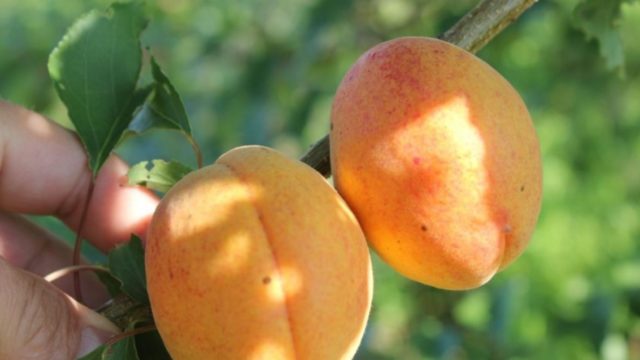
Apricot pulp consistency Peach slightly dry
Main advantages:
- large fruit size;
- excellent presentation;
- does not need pollinators;
- balanced taste;
- versatility of fruit application;
- availability of harvesting;
- pleasant aroma of ripe fruits.
Disadvantages of Apricot Peach:
- uneven ripening of fruits;
- the need for annual pruning;
- ripe fruits may crumble;
- at high humidity the pulp becomes watery.
Planting and caring for apricot Peach
In order for the tree to fully develop and subsequently give a good harvest, it is necessary to plant it correctly. Therefore, you should familiarize yourself with the features of this procedure in order to avoid serious errors.
Recommended timing
Planting apricot Peach should be in the spring. This allows the seedling to grow stronger before the onset of winter. You need to start planting as soon as the soil warms up to a depth of 50 cm. Usually in the southern regions this happens in the first decade of April, and in the central ones - by the end of this month.
Choosing the right place
For Apricot Peach, choose a sunny, open area, but protected from strong gusts of wind. You can plant a tree on the south or east side of buildings and fences, which will protect it from adverse weather conditions, but at the same time their shadow will not fall on it.The groundwater level at the site must be at least 2 m.
What crops can and cannot be planted next to an apricot
Apricot Peach is one of the crops that prefer to grow away from other trees. He can get along only with dogwood.
It is not recommended to plant this hybrid next to such crops:
- apple trees;
- pears;
- plums;
- peach;
- cherries;
- rowan;
- cherry;
- all kinds of nuts;
- raspberries;
- currants.
All these crops have common diseases and pests, so close proximity negatively affects their development.
Selection and preparation of planting material
For planting, you should choose 2-year-old seedlings with a height of at least 120 cm and no more than 180 cm. The bark should be free of damage and signs of mold, fungal diseases.
Apricot seedling Peach should have a well-developed root system, consisting of 2-3 main processes at least 1 cm in diameter and many small lateral ones. Such a plant is able to quickly adapt to a new place and grow.
Landing algorithm
Planting apricot Peach requires adherence to some recommendations. The further growth of the tree depends on how correctly it is carried out.
It is recommended to prepare a 60 by 60 cm planting pit 2 weeks before the procedure. Lay a layer of broken brick on its bottom. Fill the rest of the space by 2/3 of the volume with a soil mixture of turf, peat, leafy earth, humus and sand in a ratio of 2: 1: 1: 1: 1.
Algorithm of actions:
- Make a small elevation in the center of the landing pit.
- Put an apricot seedling on it, spread the roots.
- Install a wooden support with a height of at least 1.0 m next to it.
- Sprinkle them with earth, fill in all the voids.
- Compact the soil at the base, tread lightly.
- Tie the seedling to the support with an overlap.
- Water abundantly at the rate of 10 liters per plant.
Follow-up care of the culture
In order for a tree to fully develop and consistently give a good harvest, it is necessary to provide it with favorable conditions.
Watering Peach apricot when grown in temperate climates is rarely necessary, only in the absence of seasonal rains. And in the south, moisten it regularly once a week with the obligatory soaking of the soil in the root circle to a depth of 50 cm.
In addition, in early spring and late autumn, water-charging irrigation should be carried out, pouring 100-150 liters of water under the tree, depending on age.
You need to feed Peach apricot from the age of 5. To do this, in early spring, humus should be laid out at the base of the tree to the width of the crown with further embedding in the soil. During flowering and the formation of the ovary, you need to make a small ditch at a distance of 0.5-1.5 m from the trunk in a circular manner. Put superphosphate (50-200 g) and potassium sulfide (30-100 g) in it. Then the moat must be leveled.
Caring for Peach apricot also involves regular loosening of the soil and removing weeds in the root circle.
Trimming scheme:
- First year... Shorten the main trunk at such a height that it is 30 cm higher than the lateral branches. Leave 3-5 lower shoots, cut out the others.
- Second year... The tips of the branches of the first order should be cut off by 7-10 cm, and 3 shoots of the second should be selected on them, the rest should be removed.
- Third year... It is necessary to cut the shoots of the first and second order by 7-10 cm, leave 3 branches of the third. In this case, the height of the main trunk should be 30-50 cm higher than the lateral processes.
In the future, only sanitary cleaning of the crown from damaged and thickening shoots is carried out, maintaining a given shape.
Diseases and pests
Apricot Peach, can suffer from diseases and pests if growing conditions do not meet its requirements.In this case, the stability of the hybrid is reduced.
Possible problems:
- Moniliosis... When damaged, the bark on the main trunk cracks, premature leaf fall sets in, flowers wither, the ovary falls off.
- Ring pox... Brown convex spots appear on the fruits, the branches dry out. The disease is practically incurable.
- Valsa mushroom... An orange-colored ulcer appears on the trunk of the apricot, from which tree resin oozes.
- Aphid. A small insect that feeds on young leaves and tree shoots. When damaged, forms whole colonies, which are concentrated on the tops of the branches and on the back of the leaves.
- Leaf roll... The danger is posed by the gluttonous larvae of this pest. They feed on buds, fruit buds, leaves. With mass distribution, the yield decreases to 70%.
To protect against fungal diseases, it is necessary to process the tree with Bordeaux mixture, and use Actellic from pests.
Conclusion
Apricot Peach is a fruitful hybrid that, subject to the rules of care, is capable of showing high productivity. It can be grown on personal plots and on an industrial scale. Its high popularity is due to its excellent taste, large fruit size and the ability to transport, which is important for fruits.
